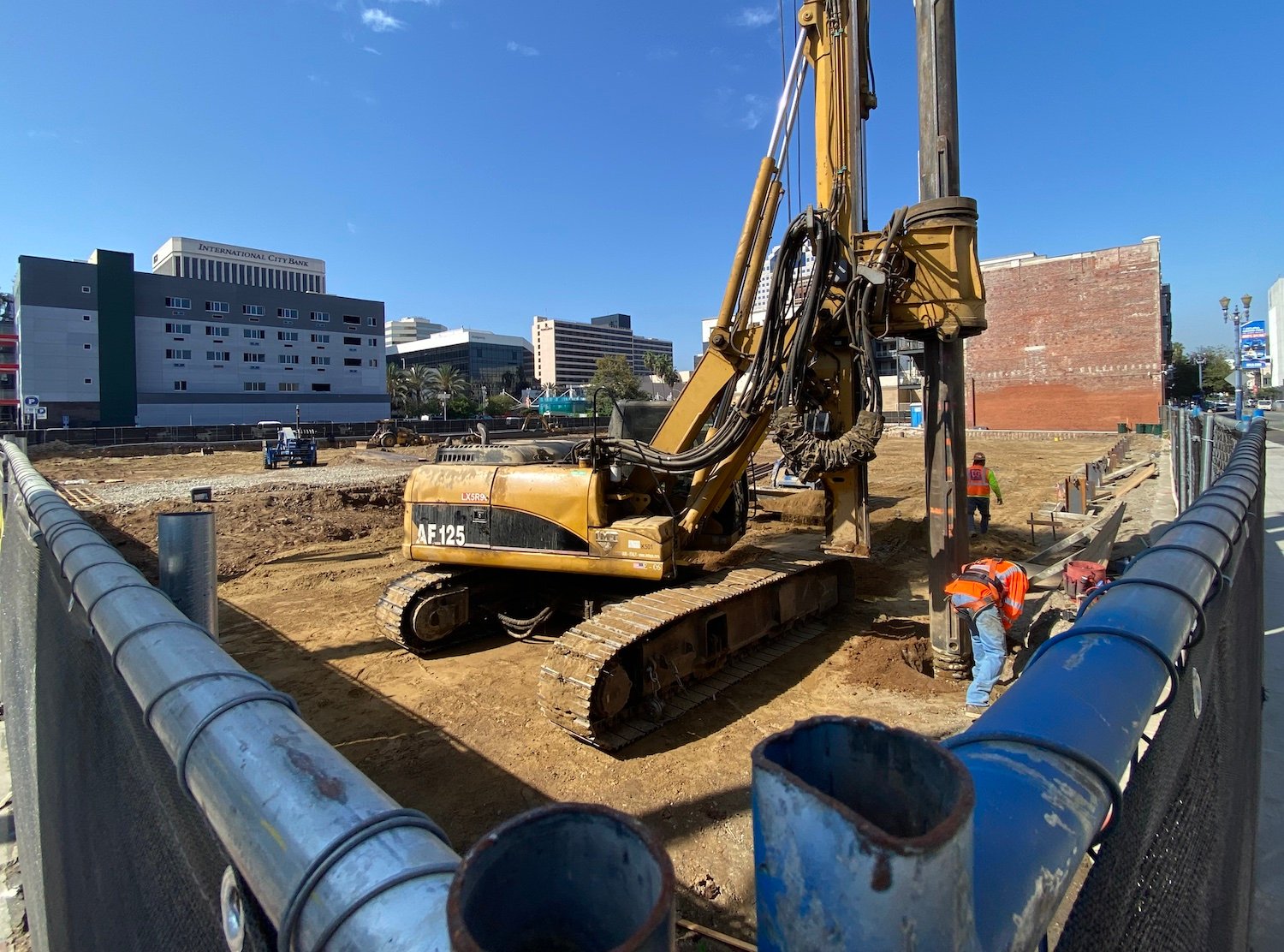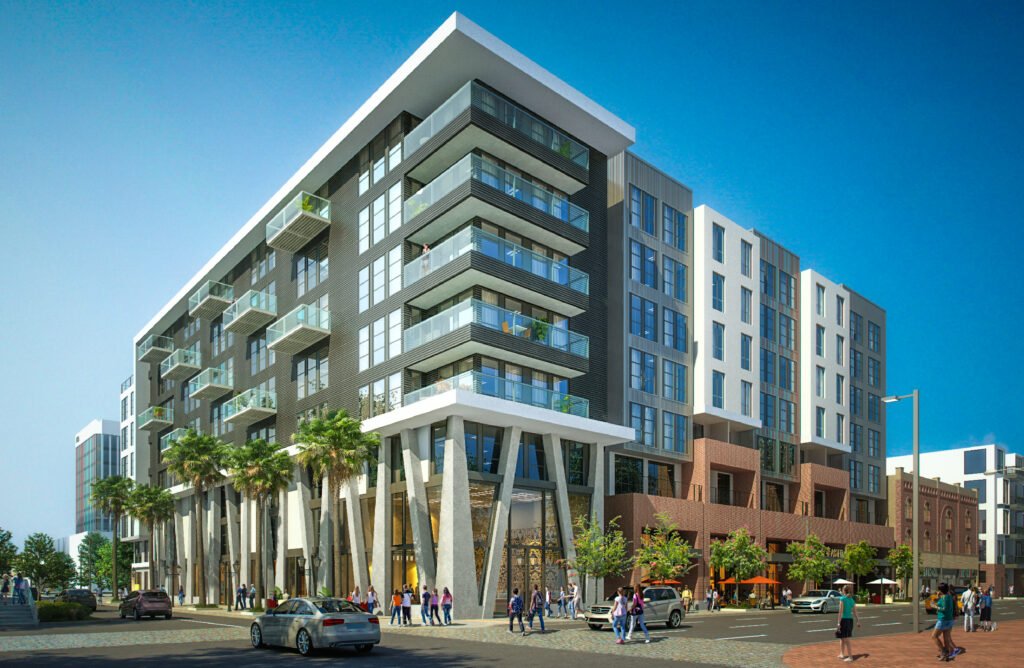Construction continues on the eight-story mixed-use building to be developed on a lot at the southwest corner of Broadway and Long Beach Boulevard, just east of the historic Psychic Temple building.
Developed by Raintree Partners and designed by Los Angeles-based architectural firm Carrier Johnson + Culture, the Aster Project will have two below-ground parking levels with two additional floors of parking above ground, providing 312 spots, along with 44 bike parking spaces and 7,292 square feet of retail space along the ground floor. While it is planned to relatively follow the same height path of the south side of Broadway from the Promenade eastward, it will be dwarfed by the buildings surrounding it to the north and east, especially given the upcoming developments outlined below.
In addition, 218 residential units will be constructed: 32 studio units, ranging from 470 to 525 square feet; 123 one-bedroom units ranging from 610 to 1,000 square feet; 61 two-bedroom units ranging from 885 to 1,335 square feet; and two three-bedroom units at 1,435 and 1,700 square feet.

The Aster will have two below-ground parking levels with two additional floors of parking above ground, providing 312 spots, along with 44 bike parking spaces and 7,292 square feet of retail space along the ground floor. While it is planned to relatively follow the same height path of the south side of Broadway from the Promenade eastward, it will be dwarfed by the buildings surrounding it to the north and east, especially given the Broadway Block project.
In addition, 218 residential units will be constructed: 32 studio units, ranging from 470 to 525 square feet; 123 one-bedroom units ranging from 610 to 1,000 square feet; 61 two-bedroom units ranging from 885 to 1,335 square feet; and two three-bedroom units at 1,435 and 1,700 square feet.

As of now, there are no affordable units attached to the complex—nor will there likely be: A citywide inclusionary ordinance was not in affect when the project was entitled and therefore the developer is not forced to include any affordable units inside the project.
What is an inclusionary ordinance and how does it affect affordability in housing?
The city’s current inclusionary ordinance was passed in 2020
In fact, when the Downtown Plan was originally being drafted, then-9th District Councilmember Steve Neal fought for an inclusionary ordinance but was ultimately shot down; had it have been included, millions of dollars or several new affordable units would exist in Downtown.


